Chun-Wun Cheng
Implicit U-KAN2.0: Dynamic, Efficient and Interpretable Medical Image Segmentation
Mar 05, 2025Abstract:Image segmentation is a fundamental task in both image analysis and medical applications. State-of-the-art methods predominantly rely on encoder-decoder architectures with a U-shaped design, commonly referred to as U-Net. Recent advancements integrating transformers and MLPs improve performance but still face key limitations, such as poor interpretability, difficulty handling intrinsic noise, and constrained expressiveness due to discrete layer structures, often lacking a solid theoretical foundation.In this work, we introduce Implicit U-KAN 2.0, a novel U-Net variant that adopts a two-phase encoder-decoder structure. In the SONO phase, we use a second-order neural ordinary differential equation (NODEs), called the SONO block, for a more efficient, expressive, and theoretically grounded modeling approach. In the SONO-MultiKAN phase, we integrate the second-order NODEs and MultiKAN layer as the core computational block to enhance interpretability and representation power. Our contributions are threefold. First, U-KAN 2.0 is an implicit deep neural network incorporating MultiKAN and second order NODEs, improving interpretability and performance while reducing computational costs. Second, we provide a theoretical analysis demonstrating that the approximation ability of the MultiKAN block is independent of the input dimension. Third, we conduct extensive experiments on a variety of 2D and a single 3D dataset, demonstrating that our model consistently outperforms existing segmentation networks.
Cross-Modal Few-Shot Learning with Second-Order Neural Ordinary Differential Equations
Dec 20, 2024Abstract:We introduce SONO, a novel method leveraging Second-Order Neural Ordinary Differential Equations (Second-Order NODEs) to enhance cross-modal few-shot learning. By employing a simple yet effective architecture consisting of a Second-Order NODEs model paired with a cross-modal classifier, SONO addresses the significant challenge of overfitting, which is common in few-shot scenarios due to limited training examples. Our second-order approach can approximate a broader class of functions, enhancing the model's expressive power and feature generalization capabilities. We initialize our cross-modal classifier with text embeddings derived from class-relevant prompts, streamlining training efficiency by avoiding the need for frequent text encoder processing. Additionally, we utilize text-based image augmentation, exploiting CLIP's robust image-text correlation to enrich training data significantly. Extensive experiments across multiple datasets demonstrate that SONO outperforms existing state-of-the-art methods in few-shot learning performance.
Where Do We Stand with Implicit Neural Representations? A Technical and Performance Survey
Nov 06, 2024



Abstract:Implicit Neural Representations (INRs) have emerged as a paradigm in knowledge representation, offering exceptional flexibility and performance across a diverse range of applications. INRs leverage multilayer perceptrons (MLPs) to model data as continuous implicit functions, providing critical advantages such as resolution independence, memory efficiency, and generalisation beyond discretised data structures. Their ability to solve complex inverse problems makes them particularly effective for tasks including audio reconstruction, image representation, 3D object reconstruction, and high-dimensional data synthesis. This survey provides a comprehensive review of state-of-the-art INR methods, introducing a clear taxonomy that categorises them into four key areas: activation functions, position encoding, combined strategies, and network structure optimisation. We rigorously analyse their critical properties, such as full differentiability, smoothness, compactness, and adaptability to varying resolutions while also examining their strengths and limitations in addressing locality biases and capturing fine details. Our experimental comparison offers new insights into the trade-offs between different approaches, showcasing the capabilities and challenges of the latest INR techniques across various tasks. In addition to identifying areas where current methods excel, we highlight key limitations and potential avenues for improvement, such as developing more expressive activation functions, enhancing positional encoding mechanisms, and improving scalability for complex, high-dimensional data. This survey serves as a roadmap for researchers, offering practical guidance for future exploration in the field of INRs. We aim to foster new methodologies by outlining promising research directions for INRs and applications.
Mamba Neural Operator: Who Wins? Transformers vs. State-Space Models for PDEs
Oct 03, 2024



Abstract:Partial differential equations (PDEs) are widely used to model complex physical systems, but solving them efficiently remains a significant challenge. Recently, Transformers have emerged as the preferred architecture for PDEs due to their ability to capture intricate dependencies. However, they struggle with representing continuous dynamics and long-range interactions. To overcome these limitations, we introduce the Mamba Neural Operator (MNO), a novel framework that enhances neural operator-based techniques for solving PDEs. MNO establishes a formal theoretical connection between structured state-space models (SSMs) and neural operators, offering a unified structure that can adapt to diverse architectures, including Transformer-based models. By leveraging the structured design of SSMs, MNO captures long-range dependencies and continuous dynamics more effectively than traditional Transformers. Through extensive analysis, we show that MNO significantly boosts the expressive power and accuracy of neural operators, making it not just a complement but a superior framework for PDE-related tasks, bridging the gap between efficient representation and accurate solution approximation.
NODE-Adapter: Neural Ordinary Differential Equations for Better Vision-Language Reasoning
Jul 11, 2024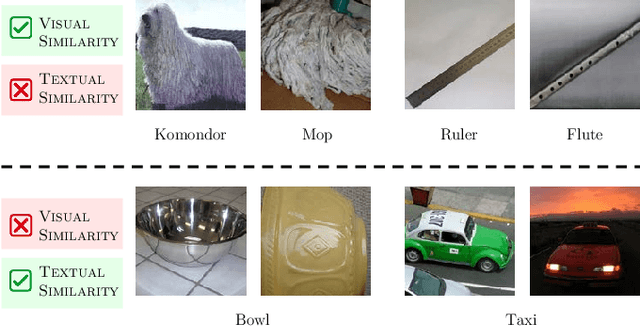
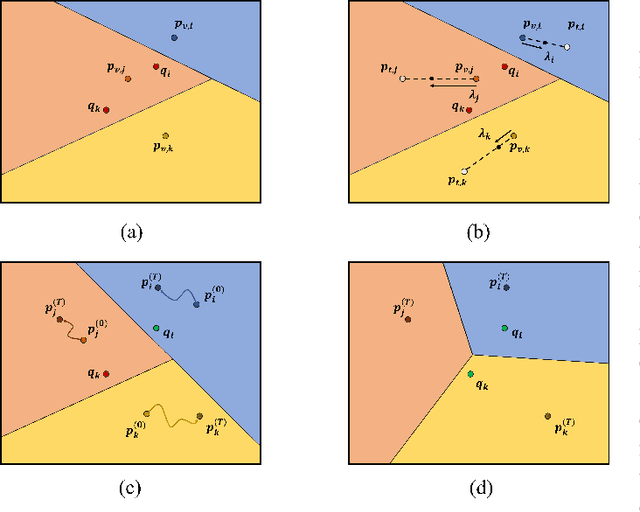
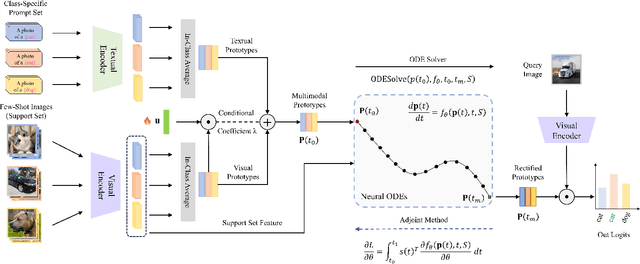
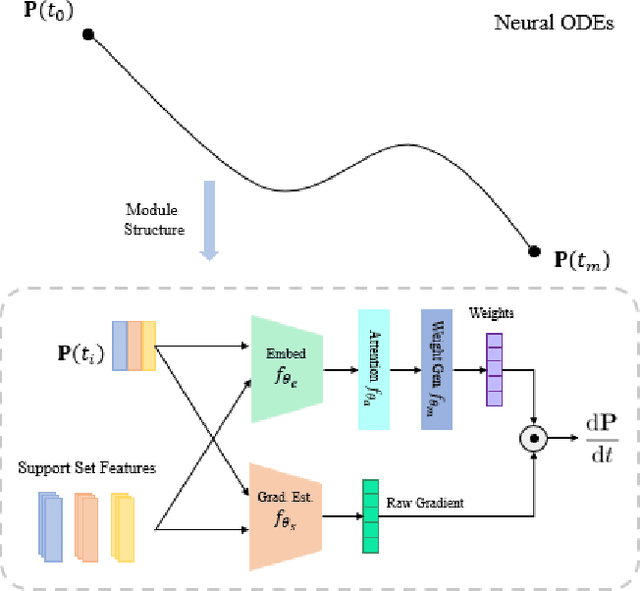
Abstract:In this paper, we consider the problem of prototype-based vision-language reasoning problem. We observe that existing methods encounter three major challenges: 1) escalating resource demands and prolonging training times, 2) contending with excessive learnable parameters, and 3) fine-tuning based only on a single modality. These challenges will hinder their capability to adapt Vision-Language Models (VLMs) to downstream tasks. Motivated by this critical observation, we propose a novel method called NODE-Adapter, which utilizes Neural Ordinary Differential Equations for better vision-language reasoning. To fully leverage both visual and textual modalities and estimate class prototypes more effectively and accurately, we divide our method into two stages: cross-modal prototype construction and cross-modal prototype optimization using neural ordinary differential equations. Specifically, we exploit VLM to encode hand-crafted prompts into textual features and few-shot support images into visual features. Then, we estimate the textual prototype and visual prototype by averaging the textual features and visual features, respectively, and adaptively combine the textual prototype and visual prototype to construct the cross-modal prototype. To alleviate the prototype bias, we then model the prototype optimization process as an initial value problem with Neural ODEs to estimate the continuous gradient flow. Our extensive experimental results, which cover few-shot classification, domain generalization, and visual reasoning on human-object interaction, demonstrate that the proposed method significantly outperforms existing state-of-the-art approaches.
Bilevel Hypergraph Networks for Multi-Modal Alzheimer's Diagnosis
Mar 19, 2024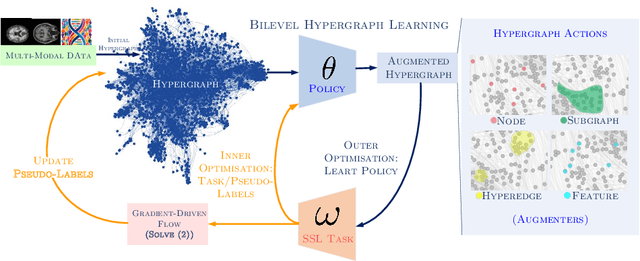
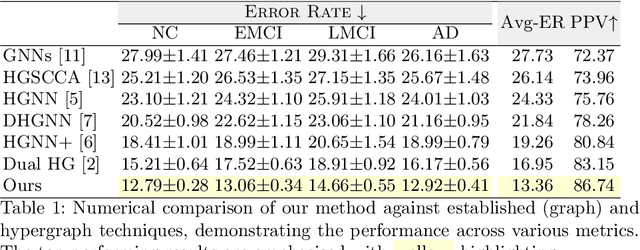
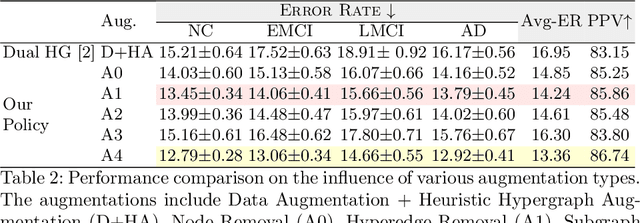
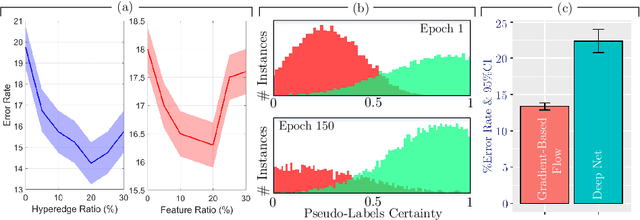
Abstract:Early detection of Alzheimer's disease's precursor stages is imperative for significantly enhancing patient outcomes and quality of life. This challenge is tackled through a semi-supervised multi-modal diagnosis framework. In particular, we introduce a new hypergraph framework that enables higher-order relations between multi-modal data, while utilising minimal labels. We first introduce a bilevel hypergraph optimisation framework that jointly learns a graph augmentation policy and a semi-supervised classifier. This dual learning strategy is hypothesised to enhance the robustness and generalisation capabilities of the model by fostering new pathways for information propagation. Secondly, we introduce a novel strategy for generating pseudo-labels more effectively via a gradient-driven flow. Our experimental results demonstrate the superior performance of our framework over current techniques in diagnosing Alzheimer's disease.
Continuous U-Net: Faster, Greater and Noiseless
Feb 01, 2023



Abstract:Image segmentation is a fundamental task in image analysis and clinical practice. The current state-of-the-art techniques are based on U-shape type encoder-decoder networks with skip connections, called U-Net. Despite the powerful performance reported by existing U-Net type networks, they suffer from several major limitations. Issues include the hard coding of the receptive field size, compromising the performance and computational cost, as well as the fact that they do not account for inherent noise in the data. They have problems associated with discrete layers, and do not offer any theoretical underpinning. In this work we introduce continuous U-Net, a novel family of networks for image segmentation. Firstly, continuous U-Net is a continuous deep neural network that introduces new dynamic blocks modelled by second order ordinary differential equations. Secondly, we provide theoretical guarantees for our network demonstrating faster convergence, higher robustness and less sensitivity to noise. Thirdly, we derive qualitative measures to tailor-made segmentation tasks. We demonstrate, through extensive numerical and visual results, that our model outperforms existing U-Net blocks for several medical image segmentation benchmarking datasets.
 Add to Chrome
Add to Chrome Add to Firefox
Add to Firefox Add to Edge
Add to Edge